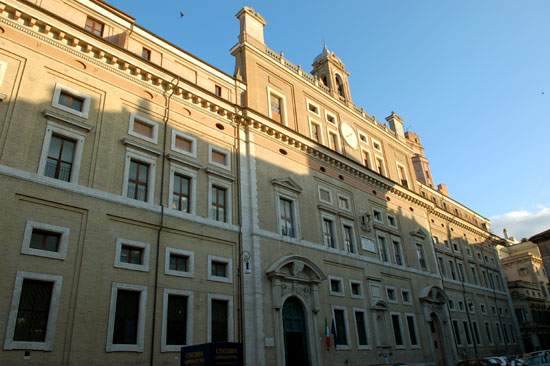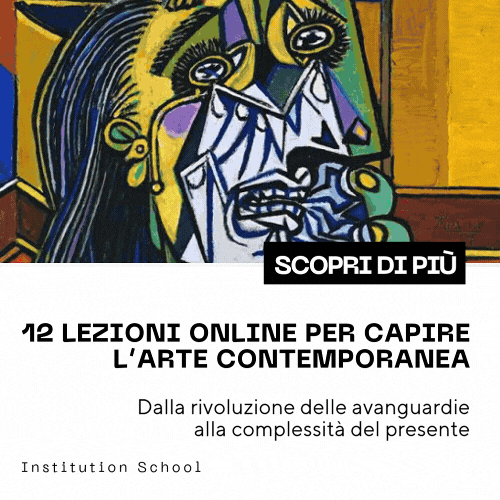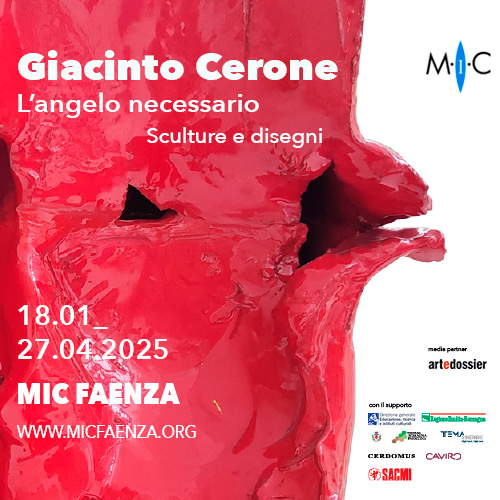What has the government done for culture in six months? Almost nothing. And it is not even considering its program
In the recent history of the Ministry of Cultural Heritage, it is difficult to recall moments that surpass the current one in terms of the real distance between announced measures and concrete results. From the moment he took office, Minister Alberto Bonisoli has accustomed us to glittering declarations of intent which, however, have not been followed by adequate actions capable of translating words into deeds. Not only that: never in the recent history of the Ministry of Cultural Heritage has there been such sudden changes of position on measures first announced or proposed, and then immediately withdrawn. Now, following the approval of the maneuver in the Senate, after the minister’s subsequent statements on the matter, and six months having passed since he took office, we finally possess some background to try to draw some preliminary assessments.
To begin with, it is rather symptomatic that the minister, in providing an initial assessment of “what we have done in the first six months of work,” starts with two measures that, in reality, are still far from being law, but which Bonisoli in some ways considers perhaps already in place: the introduction of the two-euro ticket for young people between eighteen and twenty-five years of age, and the increase in free days at museums. Measures that, moreover, concern issues far removed from those that the 5 Star Movement, Minister Bonisoli’s party, had addressed in the first pages of its electoral program (and which therefore are perhaps to be considered priorities for them): increased spending on culture, patronage and crowdfunding, and the organization of MiBAC. All topics that have not even been discussed so far. Returning, however, to free Sundays and reductions for young people, one could start by recalling the considerations that, on these pages, we had already advanced about such measures: we may consider them miserable palliatives, mere smoke in the eyes thrown in the face of those who believe that discounted admission for college-age youth, or confinement in a free cage once a month for those who might have difficulty paying the ticket price, are measures that can somehow foster an approach to culture. But it will be worth repeating: statistics from Istat show that only 8 percent of young people of the age affected by the two-euro ticket believe that museum admission tickets are too expensive. The vast majority (close to 50 percent) do not approach museums simply because they are composed of people who are not interested in museums. As for indiscriminate free admission, we refer to our proposal to abolish them and to introduce, in their place, measures that meet the needs of the minority consisting of those who do not visit museums because they consider them expensive, or because they cannot afford them.
The only reason of interest of these measures, given as already implemented but in reality not yet officially sanctioned by laws or decrees (and it will also be useful to recall how the Council of State in the first instance sent back to the sender the report accompanying the Bonisoli plan, because it was unclear), consists in their being somewhat illustrative of the hesitations to which Bonisoli and his undersecretaries have accustomed us so far. I refer, specifically, to the querelle on free Sundays: first, the minister had expressed his intention to review the initiative introduced by Dario Franceschini. Then, at the end of July, during a visit to Naples, he had even declared that it would be abolished, and the idea was confirmed by an official note that spoke of a “de facto” abolition. Finally, in September, Bonisoli, contrary to expectations, confirmed the free Sundays, with only two novelties: the “high season” free Sundays will be moved to give rise to a “free week” in March, and the directors will have the possibility of establishing additional free days (a possibility that, moreover, they already hold). Not content with that, a few weeks ago Bonisoli made a harsh attack on some newspapers that had pointed out his backtracking from the initial abolition intentions, and claimed continuity of his line (although, in fact, his initial ideas, as it turned out, appeared rather different than the form the final plan took).
 |
| The Collegio Romano, headquarters of the MiBAC |
But free Sundays were not the only measure on which one has long oscillated between timid intentions of cancellation and resolute confirmations. Consider the example of the €500 culture bonus for 18-year-olds: here, too, Bonisoli had declared a few days after his appointment that it would be better to spend the resources allocated for 18app differently. After heavy attacks from the opposition, Bonisoli had announced that, for 2018 and 2019, the funds for the bonus would remain, albeit with correctives that would be introduced “to remedy the mistakes made in the past and prepare a structural program for the promotion of cultural consumption.” Such correctives were announced just a couple of weeks ago by Undersecretary Gianluca Vacca, saying that, as of 2019, 18app would be recalibrated on the basis of beneficiaries’ income. And indeed, an amendment to the maneuver had introduced income as the discriminating factor for allocation: too bad, however, that in the bill that came out of final Senate approval, the income clause has been removed and 18app, even for 2019 (unless improbable last-minute changes intervene), will be identical to how the PD had imagined it.
In essence, it is possible to say that Alberto Bonisoli, in fact, has so far maintained the same line as those who preceded him, while, on the level of theoretical action, he has barely touched on the points of the electoral program, and has also generated some confusion among those in the field, so much so that even today it is difficult to understand what his vision on cultural heritage is. In these first six months of government, in fact, no strategic line has emerged: there has been talk almost exclusively ofspot interventions, and the real problems (first and foremost that of employment) have so far been addressed in a very bland and marginal way, with statements that have left time to find. Beginning with those on hiring, the extent of which changed from time to time: in July Bonisoli declared that he believed it was necessary to hire six thousand staff, a few weeks later he manifested his intention to launch a competition for two thousand positions, and in September he informed that he had asked the Ministry of Civil Service for a competition for over four thousand positions. Instead, reality confronts us with a very different situation: a hiring freeze in the civil service until November 2019 (this is one of the effects of the “people’s maneuver.” in order to save a hundred million euros to be allocated to quota 100 and citizenship income, the hiring of thousands of young people in public bodies is frozen, a measure defined as “very serious” by the president of the Inps, Tito Boeri) and, after that, there will be an extra just a thousand hires until 2021, in addition to about a hundred units that will enter with the sliding of the 2016 competition rankings. It is worth noting that three thousand retirements are planned in the Ministry of Culture between now and 2021: these are units that should be replaced as a result of the so-called concreteness bill, a bill that, if passed, would introduce 100 percent turnover in the civil service. That is, for every retirement there would be one new hire, and that would be from 2019. But at the moment, the concreteness bill has been at a standstill in the House for a couple of weeks, and no news has emerged since the amendment sanctioning the suspension of hiring (and which clashes head-on with the concreteness bill: it is therefore to be expected that there will be changes). And then it should also be pointed out that not a word has come from the minister or the undersecretaries regarding the doubling of IRES for third sector organizations, which include both institutions that assist the poor and needy and foundations that promote research, letters, the arts, science, and culture (think of what a tax rate that increases from 12 to 24 percent might mean for a foundation that provides research grants for young scholars): a doubling that is estimated to be worth just over 100 million euros, but which is likely to create quite a bit of damage to the sector (as well as hitting those who would need help).
Otherwise, there is no significant news: the distribution of the (few) funds saved on 18app is a purely accounting operation (perhaps it would have been better to have had the courage to abolish the bonus for 18-year-olds, given also Bonisoli’s remark that “culture is not an electoral boon, but an investment.” and thus find a more interesting way to invest, in structural measures, the nearly three hundred million euros of the bonus), the redistribution of funds in the plan for contemporary art is unclear (it is not clear what is meant by “promotion abroad of Italian contemporary art”) and risks crowding out GNAM and MAXXI in Rome, and in the face of a few scant investments (the twelve and a half million euros for the lyric symphonic foundations, a drop compared to the accumulated debt, the eight million for the FUS, plus a few allocations for realities such as Matera 2019, Parma 2020, the Accademia dei Lincei, the Institute for the History of the Risorgimento and a few others) it is necessary to remark the cuts to the contribution for the containment of spending for autonomous museums and that to tax credits for bookstores and movie theaters, for a total of almost eight million euros. The 109 million euro investment plan for fire safety should be noted favorably: it is true that these are resources pertaining to the so-called “2007-2013 Reinvested Funds,” however, it is positive that the allocation concerns the safety of our institutions.
But it is still little, especially when one considers that the current governmental team has always presented itself as dedicated to the most radical change, and that in the last one hundred and eighty days there has been no mention of any of the programmatic points with which the 5 Star Movement presented itself at the elections. No mention of the revision of Franceschini’s reform, no discussion of the problem of volunteering as a substitute for professional work, little and bad was said about work itself (and, by the way, the minister did not even make himself heard after the big demonstration on October 6), there was no mention of improving the system of Italian cultural patronage (starting with the Art Bonus), and the same goes for improving the usability of cultural heritage, no attention was even paid to the disastrous situation of libraries, much less to the legal recognition of cultural professionals, and the topic of additional services in museums and the Ronchey Law was never touched upon. Of course, we all agree that in six months it is impossible to bring about decisive changes, but it is still a reasonable amount of time to set a strategy, adopt guidelines, draw up programmatic points, have an outline road map, and engage in discussions with operators and professionals. Or, at least, to give even minimal consideration to their program. This is what is blamed on the minister: the lack of a vision. The result is that the cultural heritage system runs the risk of living from day to day: one may be able to derive momentary benefits from a few ad hoc measures, but without a long-term strategy being adopted, and if there is little inclination to engage with the insiders, it also becomes very difficult to deal with the many problems that plague the system. And if the trend is to package up what few actions taken so far and present them as great achievements, while continuing to postpone the start of discussions on the thornier problems, then it may be good to start considering reversing it right away.
Warning: the translation into English of the original Italian article was created using automatic tools. We undertake to review all articles, but we do not guarantee the total absence of inaccuracies in the translation due to the program. You can find the original by clicking on the ITA button. If you find any mistake,please contact us.





























